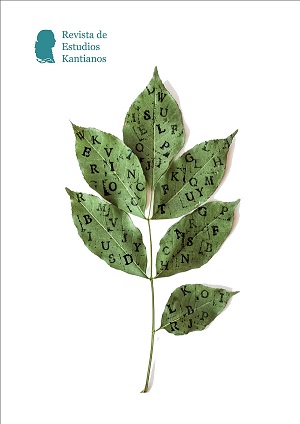Continuidad y novedad en la concepción histórica de Kant en El conflicto de las facultades
DOI:
https://doi.org/10.7203/REK.2.1.9892 Abstract
Abstract
En el trabajo analizamos algunas continuidades y novedades fundamentales de la concepción kantiana de la historia en el texto El conflicto de las facultades (1798) en comparación con su perspectiva histórica previa. Mostramos que, en líneas generales, Kant conserva el marco teórico a partir del cual explica el desarrollo histórico en sus textos anteriores, es decir, los conceptos de disposiciones humanas y de circunstancias externas de desenvolvimiento de dichas disposiciones. Ahora, en 1798 modifica el tipo de disposiciones que cumplen el rol explicativo en el desarrollo histórico pues ahora son las disposiciones morales y no, como antes, las disposiciones no morales aquellas que motorizan el progreso histórico. Esto tiene una consecuencia importante en la concepción de la estructura de tiempo histórico que será indicada en el trabajo.
 Downloads
Downloads
Downloads
Published
How to Cite
-
Abstract535
-
PDF (Español)485
Issue
Section
License
![]()
The authors who publish in this journal agree with the following terms:
- The authors retain their copyright and guarantee to the journal the right to be the first to publish the work and to license it under a Creative Commons Attribution License that allows others to share the work with an acknowledgement of its authorship and the initial publication in this journal.
- Authors may separately establish additional agreements for non-exclusive distribution of the version of the work published in the journal (for example, placing it in an institutional repository or publishing it in a book), with acknowledgement of its initial publication in this journal.
- Authors are allowed and encouraged to disseminate their work electronically (e.g., in institutional repositories or on their own website) before and during the submission process, as this can lead to productive exchanges as well as earlier and greater citation of published work (see The Effect of Open Access).








